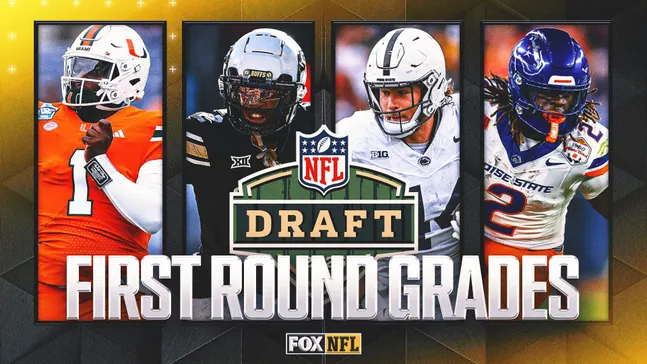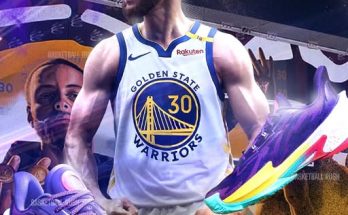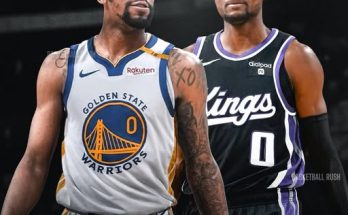The NFL Draft is always a combination of careful calculation, endless projection, and more than a dash of high-stakes poker. But few decisions have ignited more debate than the New York Giants’ first-round choice of Shedeur Sanders over Jaxson Dart. One was a high-profile, high-pressure pick brimming with pedigree and potential. The other was a surging late-riser who proved time and again that he could lead, adapt, and deliver. And now, with the pick in, the fan base divided, and the media frenzy in full swing, the question looms large: Did the Giants make a mistake?
Shedeur Sanders comes into the league with more cameras than questions. The son of Pro Football Hall of Famer Deion Sanders, Shedeur played for his father at Jackson State before following him to Colorado. His college career was one of historic stats, eye-popping plays, and viral moments. But it wasn’t without bumps—particularly in the rough-and-tumble trenches of Power Five football. Questions about his pocket presence under pressure, durability, and ability to adjust to NFL defenses didn’t go away just because his name was trending.
On the other hand, Jaxson Dart was the slow burn. The Ole Miss quarterback flew somewhat under the national radar, though scouts quietly raved about his footwork, his toughness, and his ability to elevate his team. Dart’s trajectory followed a more traditional arc. He transferred from USC, patiently developed in Lane Kiffin’s system, and made significant leaps in poise and production each season. He lacked the flash but not the fight. And that’s exactly what many believed the Giants needed.
The Giants’ decision to draft Shedeur at No. 6 overall sent a jolt through the football world. Some hailed it as a bold move, a statement pick. After all, Sanders isn’t just a quarterback—he’s a brand, a beacon of a new era. In the name-image-likeness (NIL) college football age, he was perhaps the most visible player not named Caleb Williams. New York, being New York, seemed like a natural landing spot. Marketability? Check. Swagger? Check. Potential? Massive. But critics, including more than a few anonymous scouts, were quick to raise red flags.
They pointed to Colorado’s offensive line, or lack thereof, as a stress test Sanders failed. While he was often sacked and hurried, the concern wasn’t just the pressure—it’s how he responded to it. Holding onto the ball too long, locking in on receivers, and drifting into sacks instead of escaping them plagued his junior season. Could he fix those habits with NFL coaching? Certainly. But should the Giants, a team trying to dig itself out of the quarterback purgatory that followed Eli Manning, bank their future on that hope?
Jaxson Dart, selected eight picks later by the Minnesota Vikings, had none of the fanfare. But he had something just as valuable—momentum. Dart improved every statistical category in his final season in Oxford, and his pre-draft process wowed evaluators. His interviews were sharp, his whiteboard work showed advanced understanding of defensive schemes, and his pro day performance was nearly flawless. In many ways, he represented the classic safe pick—but that undersells his ceiling. Dart’s athleticism, arm strength, and leadership are elite tools, even if they aren’t trending on social media.
The Giants were clearly enamored with Sanders’ upside. His deep ball, his accuracy when given time, and his confidence are hard to coach. Plus, head coach Brian Daboll, once credited with helping develop Josh Allen in Buffalo, likely saw a project he could mold. From a schematic perspective, Sanders fits the modern mold of dual-threat quarterbacks—able to extend plays and make magic when the pocket collapses. The belief is that, with protection and patience, Sanders can be a star.
But belief is a risky currency in the NFL.
There’s also the locker room factor. Jaxson Dart was beloved in his collegiate programs, praised for his work ethic, team-first mentality, and quiet leadership. Sanders, while charismatic, brings a different energy. Some see it as infectious. Others, including unnamed NFL executives quoted during the pre-draft process, expressed concern about the entourage, the cameras, and the distractions that could come with him to an NFL franchise. In New York—a media market known for devouring egos and headlines—that concern is amplified.
Timing matters, too. The Giants aren’t starting from scratch, but they’re not contenders either. They need a quarterback who can handle adversity, galvanize a locker room, and steadily guide the team through the rigors of a rebuild. While Sanders offers sky-high potential, he may also require a redshirt season—or at least a slow introduction to the NFL grind. Dart, by contrast, is widely seen as more plug-and-play. He’s not as flashy, but he might be more ready.
And then there’s fit. The Vikings already have a strong supporting cast—receivers, a solid offensive line, and a respected coaching staff. That environment could fast-track Dart’s development. The Giants? Not so much. Their offensive line remains suspect, and their receiving corps lacks a true No. 1 option. Throwing a rookie like Sanders into that situation could risk stunting his development, or worse, eroding his confidence. It’s a volatile mix for any young quarterback, especially one who thrives on rhythm and trust.
The fan base, predictably, is split. Sanders jerseys flew off the shelves within hours of the pick. His introductory press conference drew massive attention. But every preseason rep, every interception in training camp, and every clip will be scrutinized. Fair or not, Sanders enters the league with a target on his back. Dart, meanwhile, walks into a far less chaotic environment where expectations are tempered, and mistakes are seen as part of the growth process rather than evidence of failure.
One cannot ignore the cultural implications either. Sanders is one of the few Black quarterbacks to be drafted in the first round this decade, and his success—or lack thereof—will influence the narrative for years to come. There’s added weight to that responsibility, whether he acknowledges it or not. Giants brass surely factored in both the social and symbolic power of their selection. But in the NFL, symbolism only goes so far. Production wins out.
Long term, the debate will come down to what each quarterback becomes. If Sanders unlocks his full potential, he could be the kind of franchise player who changes the trajectory of a team and city. He has all the physical tools, and the mental makeup to thrive under the bright lights—if he can adapt. But if his adjustment curve proves too steep, or the Giants fail to support him properly, it could go down as one of the most glaring missed opportunities in franchise history.
If Dart flourishes in Minnesota—perhaps in the mold of Kirk Cousins but with a bit more mobility and daring—it will only magnify the scrutiny on New York. The Vikings took the patient path. They chose stability and upside without the baggage. And for a team looking to retool quickly in the post-Cousins era, Dart might be the smooth handoff they needed.
Ultimately, the Giants didn’t just pick a player. They picked a direction. Shedeur Sanders is a statement, a swing for the fences, a gamble that could pay off in massive ways. But with every gamble comes risk, and the Giants are betting their future on a player who still has more questions than answers. Whether that bet pays off or blows up will define the next chapter of Giants football.
So, did the Giants miss?
The answer won’t come this season or next. It may take years, a dozen starts, a playoff run—or a string of forgettable losses—to reveal the truth. But for now, the question lingers, gnaws, and fuels endless debate: Shedeur or Dart? Flash or function? Upside or readiness?
Time will tell. It always does. But in New York, the clock is already ticking.



